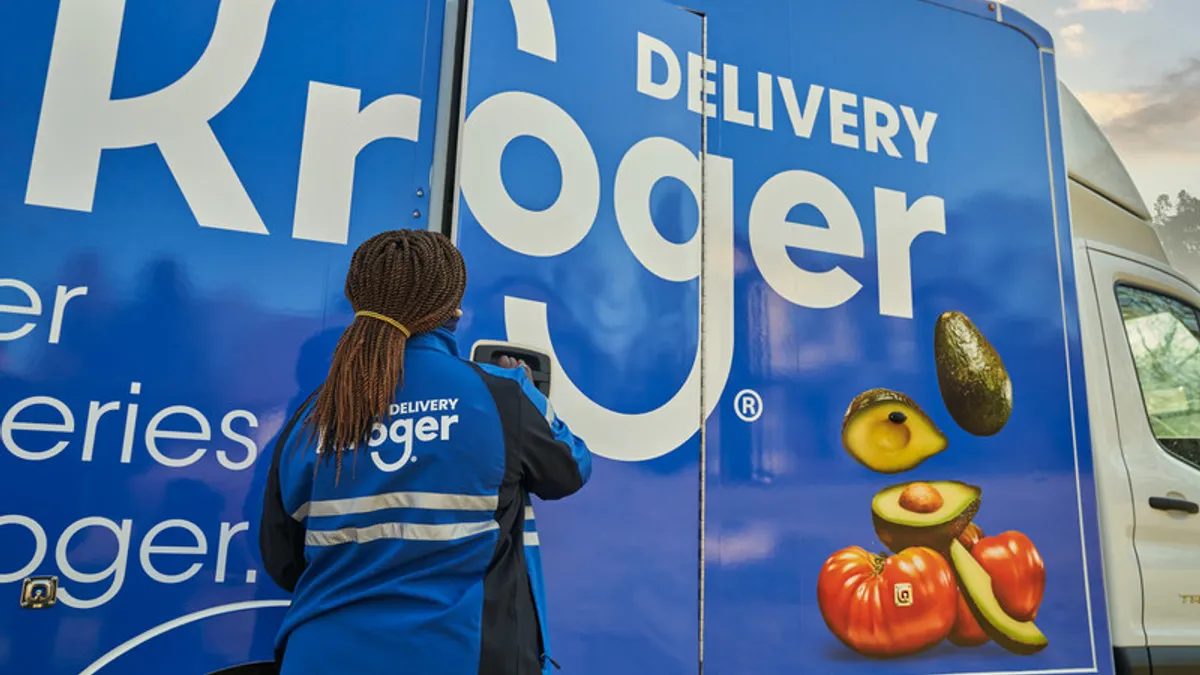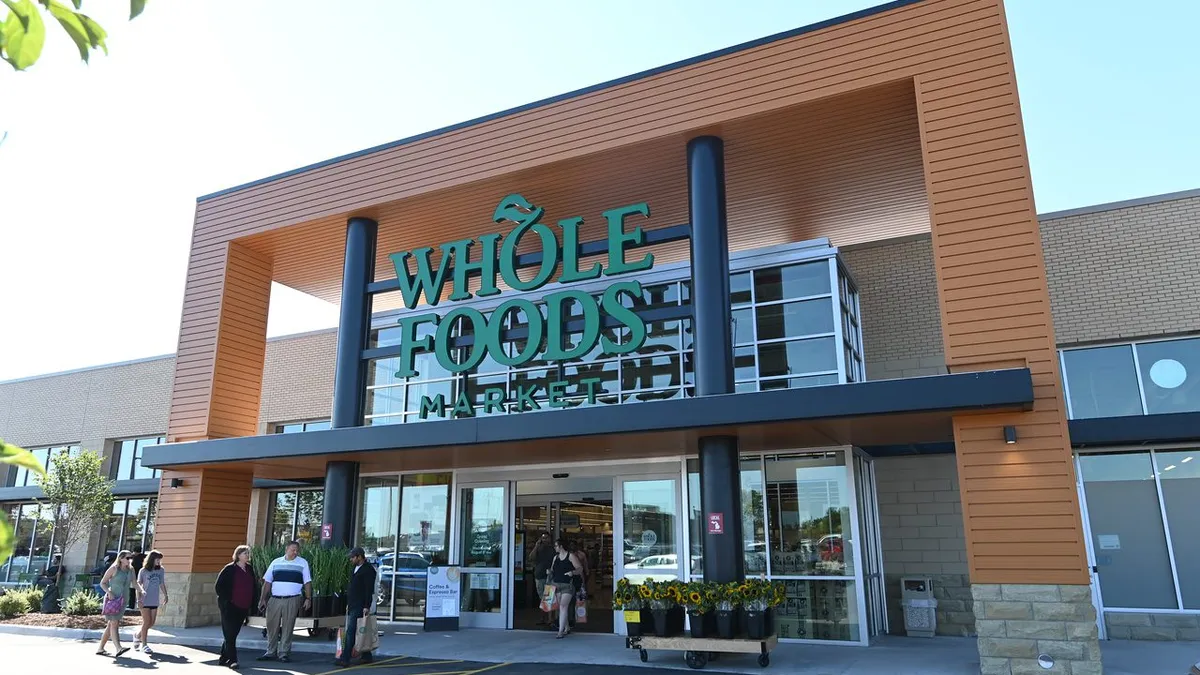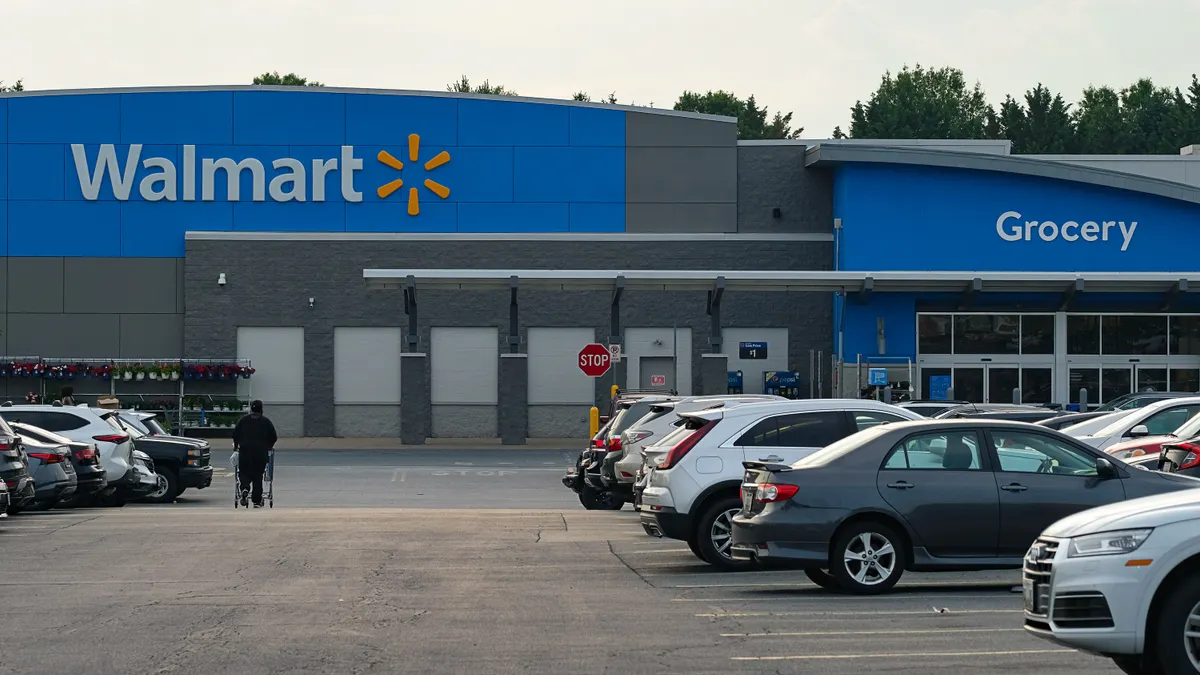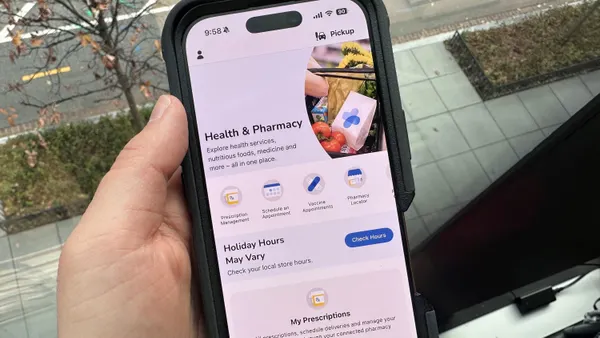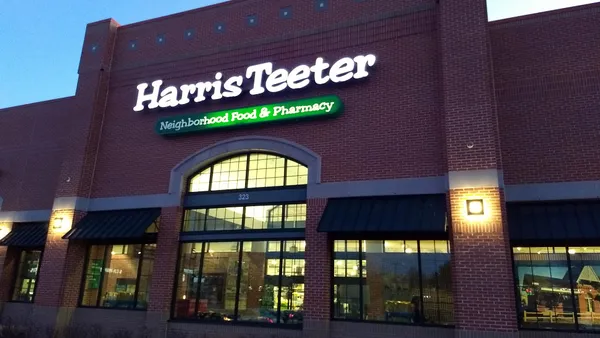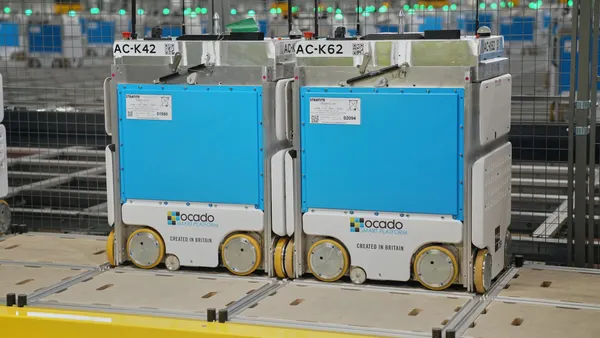Dive Brief:
- Online grocery sales jumped nearly 28% in June compared to the year prior, while in-store sales slipped, according to Brick Meets Click and Mercatus’ latest monthly report.
- All three receiving methods — delivery, pickup and ship-to-home — reported sales gains of at least 25%.
- Walmart and mass retailers as a whole continue to threaten traditional grocers, with Mercatus executive Mark Fairhurst stating that June’s results “should be a wake-up call” to regional grocers.
Dive Insight:
While U.S. e-grocery sales increased 27.6% last month to $9.8 billion, in-store grocery sales fell slightly due to the combined impact of the surge of digital orders and consumers shifting where they primarily purchase groceries, according to the report.
Overall grocery spending per household rose less than 3% during the final week of June 2025 compared to the same period the year prior, indicating that in-store grocery sales across retail formats saw a decline, according to Brick Meets Click and Mercatus.
However, supermarkets were hit hard by a shift in where consumers buy most of their groceries. While Walmart saw a nearly 1 percentage point rise in the share of households that indicated the mass retailer was their primary grocery store, and hard discounters like Aldi gained almost 1.5 percentage points, supermarkets lost over 2 percentage points, per the report.
The growing competition from mass and discount retailers carries over to e-grocery results, as well, Brick Meets Click and Mercatus found. One in four households that ordered groceries online from supermarkets also did so from Walmart in June, up 400 basis points year-over-year. On top of that, cross-shopping between traditional grocery stores and Walmart has risen every June since 2020 — which is when Brick Meets Click began measuring and monitoring this shopping indicator, the firm said.
Overall, delivery saw a 29% year-over-year growth in June sales, reaching $3.8 million, which Brick Meets Click and Mercatus credited to strong growth in the segment’s monthly active user base as well as gains in order frequency and average order value.
“June’s strong results signal that this sustained surge in eGrocery sales, particularly in Delivery, is likely to continue because Delivery is now effectively free for many users,” Brick Meets Click Partner David Bishop said in a statement.
Pickup also saw growth, with sales increasing 25% year-over-year to $4.3 billion, driven by increases to its monthly active user base, order frequency and average order value. Ship-to-home, meanwhile, saw sales increase 33% to $1.7 billion with its monthly active user base expanding faster than the delivery segment’s, per the report.
Delivery and ship-to-home both increased their sales share, with the former currently representing 38% of e-grocery sales and the latter 18%. Pickup, however, saw its share decline for the second straight year, dropping 110 basis points to 44%.
The report is based on a Brick Meets Click survey of 1,496 adults conducted June 29-30, as well as a survey by the firm in June 2024 of 1,744 people.
According to Brick Meets Click, despite the grocery channel reporting year-over-year improvements in building engagement through delivery and pickup, mass retailers still have a more than 10-point advantage in delivery, with Walmart continuing to attract new online customers who primarily buy groceries from supermarkets.
Fairhurst, chief growth marketing officer at Mercatus, suggested that regional grocers leverage their customer data as a competitive advantage.
The sharp rise of cross-shopping between traditional supermarkets and Walmart underscores “the urgent need to defend your customer base on every channel by owning the relationship at each touchpoint,” Fairhurst said.


